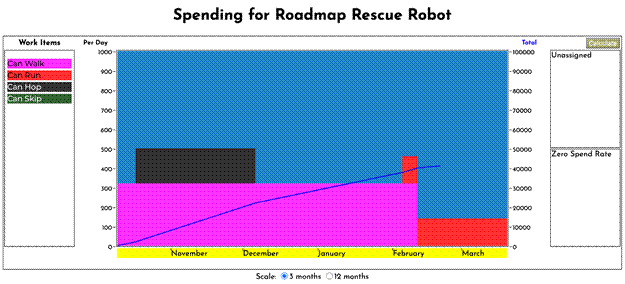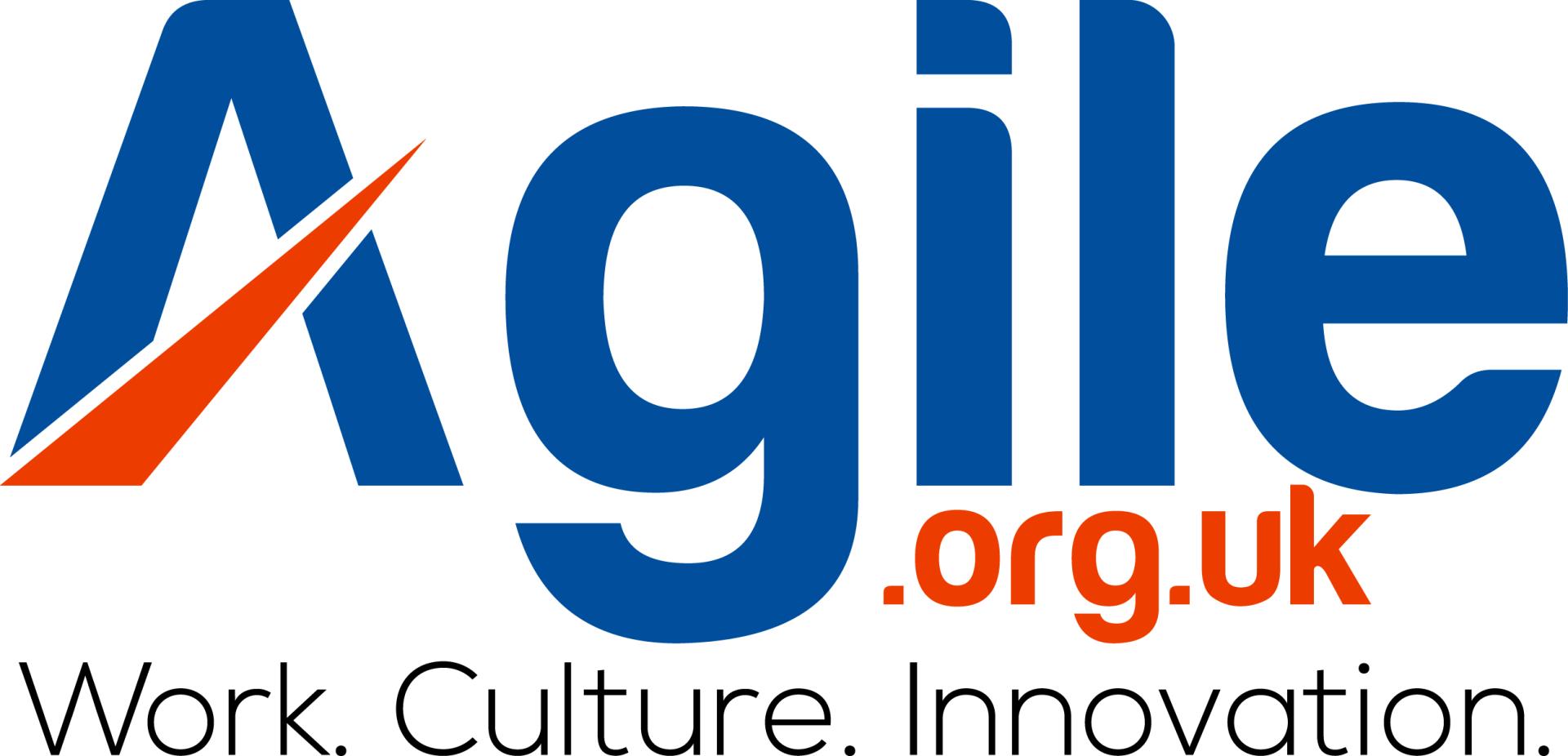As Bjarte Bogsnes wrote in his book, Implementing Beyond Budgeting,
“If things are stable and you believe tomorrow will be like today, why should you spend time on forecasting?” [1]
His point is that today, things are too dynamic to be able to trust forecasts. He is not saying not to forecast: he is saying to not take them as commitments. He goes on to discuss,
“the different purposes of a budget—target setting, forecasting, and resource allocation—and why combining the three causes serious problems.”[2]
Traditional corporate finance is based on the premise that companies exist in a steady state, until they fund a project to change the state. The sequence goes like this:
- Operate in current state.
- Fund and execute a project to change the state.
- Operate in a new state.
The project’s return on investment (ROI) is calculated as the difference in expected value of the new state and the old state (using an assumed time horizon), divided by the cost of the project.
That fits well with fixed budget cycles: planning consists of identifying the projects with the highest ROI, giving each of those a fixed budget, and then executing the projects.
In a stable environment, with predictable work, this approach is fine. But today, things are not stable. And today a lot of the work that people do requires technology innovation or adoption of new methods and tools. Those things are not predictable, and expected return is very hard to calculate in today’s unstable climate.
The core premises of the bedrock model of corporate finance are no longer valid.
The Era of Open-Ended “Product” Investment
Some companies develop products, and some do not.
That’s what most managers think, but they are wrong. Actually, nearly all develop products.
Does your company offer a service rather than a product? Well, a service is a type of product: your service has a boundary in terms of what you offer and what you don’t offer; you are continuously improving it; and there are probably competing offerings out there. You might not be able to put your service on a table and look at it, but it is still a type of product. You can’t put software on a table and look at it either: software is a set of information – bits stored in a digital memory somewhere – usually accompanied by support services.
The line between product and service is no longer useful: every offering is a type of product.
Increasingly, businesses are realizing that their core capability has become their platform, rather than their service. Amazon is first and foremost a commerce platform. Brian Moynihan, CEO of Bank of America, said as far back as 2019,
“We’re a technology company, wrapped around a great bank, and that’s going to be the future of what we do.”[3]
Their product is really the set of things that their platform can do for their customers.
The thing is, that product is never in a steady state. It is always being improved.
There is no more steady state in business. There is no “build it and then operate it”. The building step never ceases as long as the product exists.
That means that calendar-based budgeting methods don’t fit today’s reality, because the work is continuous and never-ending.
We need to think in terms of ongoing investment – spend rates. Those are what we need to balance, not budgets.

How to Control Spending If It Is Open-Ended
Fixed budgets make sense for things that are fixed: fixed in duration and scope, and also predictable.
If something is not of that type, a different approach is needed.
Strategy needs to be managed continuously, not in a calendar-based cycle. It’s okay to have calendar-based processes for, say, reflecting on select issues. But strategy should not be held fixed. As events occur in the course of business, one should always be thinking, Does that impact any of our strategies?
If it does, there is no time to waste: strategies need to be reviewed and updated right away – not in the next planning cycle.

Dynamic forecasting is the practice of updating financial forecasts as events occur, instead of at fixed intervals. It is a much better fit for today’s products. It requires that the financial team become “an active business partner, adviser, and challenger to business teams”, according to Bogsnes.[4]
Some organizations have shifted to more frequent planning cycles. However, that misses the point. The point is that we need to be event-based: as events happen, we need to reevaluate, immediately.
That does not mean that we become erratic. Strategic plans need to be stable most of the time; but we need to be alert for when a radical pivot is needed without delay. As Bogsnes says,
“Maybe companies should put less effort into becoming better at forecasting, and more into becoming more agile?”[5]
We need to always have two levels of planning in our minds: (a) our short-term tactical plans or triage plans, and (b) our long-term strategic or root cause-based plans. Both matter, and the universe does not care if it upsets our strategic plans: it sometimes throws us a surprise, and delay can be costly.
If your plans are in terms of fixed budgets, then you have arbitrarily set a fixed timeframe for no good reason. Instead, you can simply reallocate the stream of funds that are available, or try to access additional sources. Remember that forecasts and targets should not be equated with allocation commitments.
This is more realistic, because the vast majority of projects are for things that continue to need funding after the project has completed. They are products, and today, products require continuous innovation and improvement. If we are talking about competitive markets, today’s products do not go into maintenance mode: they are always being improved. That means that they need a continuous funding stream – not a fixed budget for a period of time.
Cliff Berg bio:
Cliff leads Agile 2 Academy, and is the architect of Streamline[6], a radically different strategy, planning, and execution tool that is outcome-focused instead of task-focused. Previously Cliff was co-founder and CTO of Digital Focus, a startup that grew from 2 to 200 people in five years and that built mission-critical customer-facing systems for companies like FedEx, Capital One Bank, McKesson Pharmaceuticals, and many others.
[1] Bogsnes, Bjarte. Implementing Beyond Budgeting: Unlocking the Performance Potential (p. 78).
[2] Bogsnes, p. 139.
[3] https://thefinancialbrand.com/news/banking-technology/bofa-brian-moynihan-erica-branch-mobile-banking-millennials-fintech-86675
[4] Bogsnes, p. 125.
[5] Bogsnes, p. 163.
[6] https://www.agile2academy.com/streamline-product-description

Cliff is Managing Partner of Agile 2 Academy. As a successful tech entrepreneur, he was co-founder and CTO of Digital Focus, a startup that grew from 2 to 200 people in five years and was known for its success in rapidly building high reliability Internet-facing business critical systems for companies like FedEx, McKesson, United Overseas Bank, and many others. It was acquired in 2006. Cliff’s 2006 textbook High-Assurance Design documents many of the engineering and agility lessons learned. Since then Cliff has helped with more than ten Agile or DevOps transformations, and is a DevOps trainer and subject matter expert. In 2020 Cliff assembled the global Agile 2 team to reimagine “Agile”, and was the lead author of the Agile 2 book. Cliff is certified in the Human Synergistics Organizational Culture Inventory® and Organizational Effectiveness Inventory® assessment tools. He has degrees from Cornell University in Operations Research, Nuclear Engineering, and Physics.













